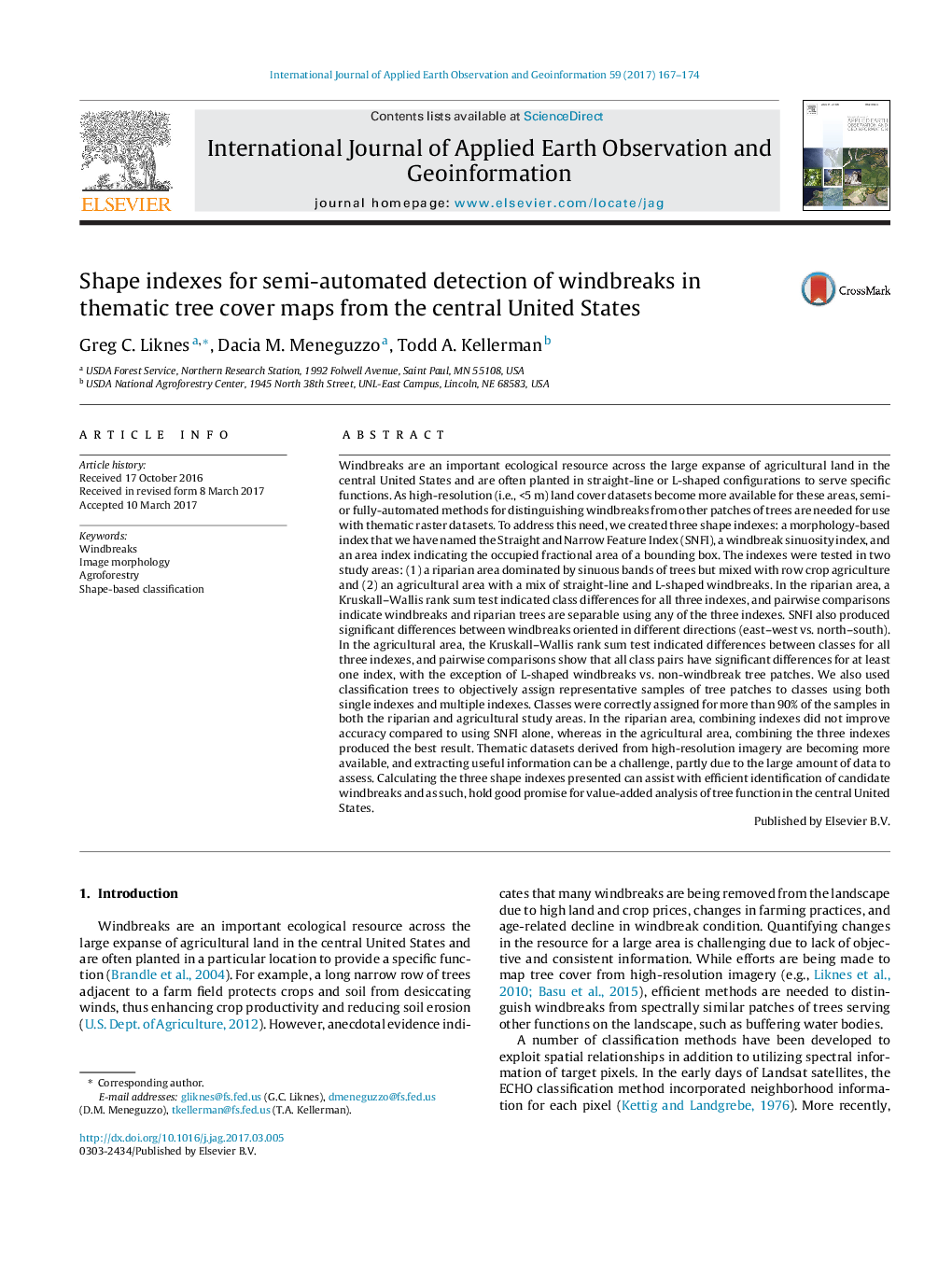| کد مقاله | کد نشریه | سال انتشار | مقاله انگلیسی | نسخه تمام متن |
|---|---|---|---|---|
| 5755611 | 1621798 | 2017 | 8 صفحه PDF | دانلود رایگان |
عنوان انگلیسی مقاله ISI
Shape indexes for semi-automated detection of windbreaks in thematic tree cover maps from the central United States
ترجمه فارسی عنوان
شاخص های شکل برای تشخیص نیمه خودکار زلزله ها در نقشه های پوشش درختی از مرکز ایالات متحده
دانلود مقاله + سفارش ترجمه
دانلود مقاله ISI انگلیسی
رایگان برای ایرانیان
کلمات کلیدی
بادبندها، مورفولوژی تصویر، جنگل زراعی، شکل مبتنی بر شکل،
موضوعات مرتبط
مهندسی و علوم پایه
علوم زمین و سیارات
کامپیوتر در علوم زمین
چکیده انگلیسی
Windbreaks are an important ecological resource across the large expanse of agricultural land in the central United States and are often planted in straight-line or L-shaped configurations to serve specific functions. As high-resolution (i.e., <5Â m) land cover datasets become more available for these areas, semi- or fully-automated methods for distinguishing windbreaks from other patches of trees are needed for use with thematic raster datasets. To address this need, we created three shape indexes: a morphology-based index that we have named the Straight and Narrow Feature Index (SNFI), a windbreak sinuosity index, and an area index indicating the occupied fractional area of a bounding box. The indexes were tested in two study areas: (1) a riparian area dominated by sinuous bands of trees but mixed with row crop agriculture and (2) an agricultural area with a mix of straight-line and L-shaped windbreaks. In the riparian area, a Kruskall-Wallis rank sum test indicated class differences for all three indexes, and pairwise comparisons indicate windbreaks and riparian trees are separable using any of the three indexes. SNFI also produced significant differences between windbreaks oriented in different directions (east-west vs. north-south). In the agricultural area, the Kruskall-Wallis rank sum test indicated differences between classes for all three indexes, and pairwise comparisons show that all class pairs have significant differences for at least one index, with the exception of L-shaped windbreaks vs. non-windbreak tree patches. We also used classification trees to objectively assign representative samples of tree patches to classes using both single indexes and multiple indexes. Classes were correctly assigned for more than 90% of the samples in both the riparian and agricultural study areas. In the riparian area, combining indexes did not improve accuracy compared to using SNFI alone, whereas in the agricultural area, combining the three indexes produced the best result. Thematic datasets derived from high-resolution imagery are becoming more available, and extracting useful information can be a challenge, partly due to the large amount of data to assess. Calculating the three shape indexes presented can assist with efficient identification of candidate windbreaks and as such, hold good promise for value-added analysis of tree function in the central United States.
ناشر
Database: Elsevier - ScienceDirect (ساینس دایرکت)
Journal: International Journal of Applied Earth Observation and Geoinformation - Volume 59, July 2017, Pages 167-174
Journal: International Journal of Applied Earth Observation and Geoinformation - Volume 59, July 2017, Pages 167-174
نویسندگان
Greg C. Liknes, Dacia M. Meneguzzo, Todd A. Kellerman,
